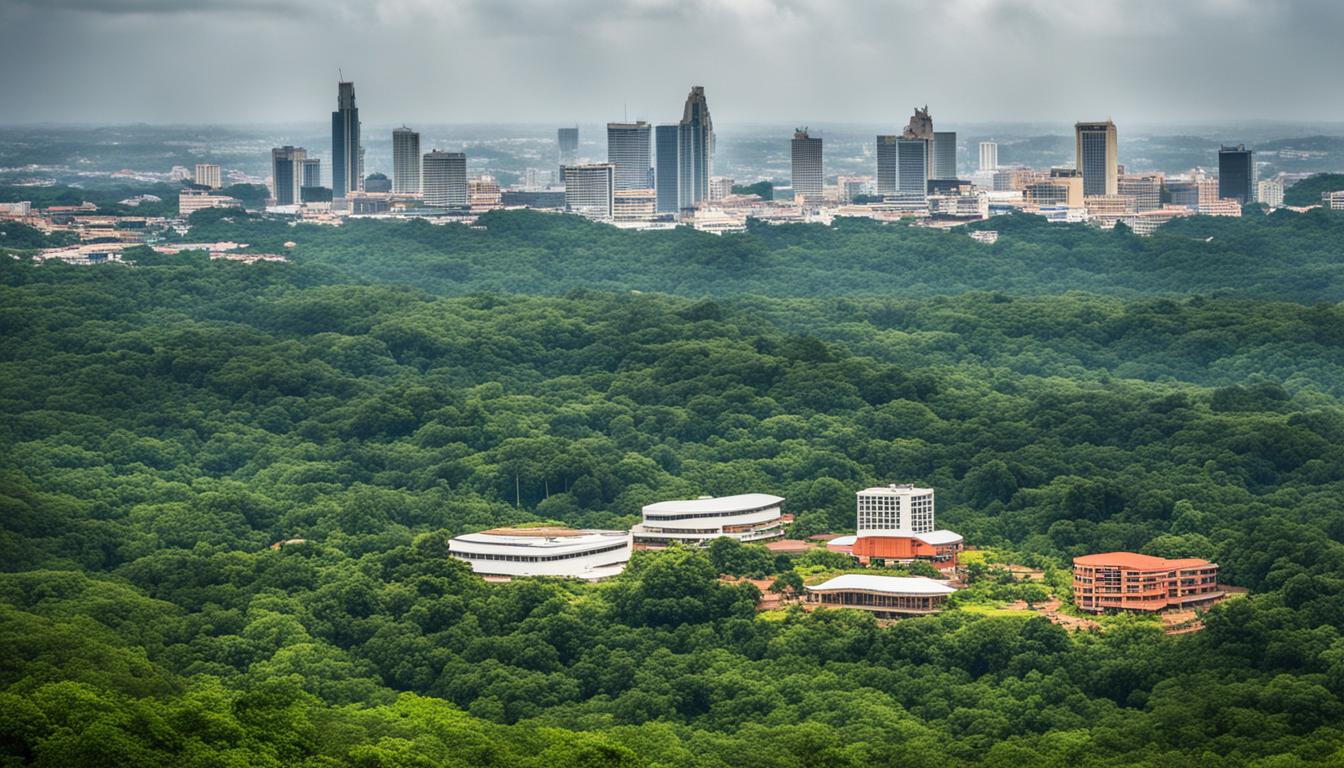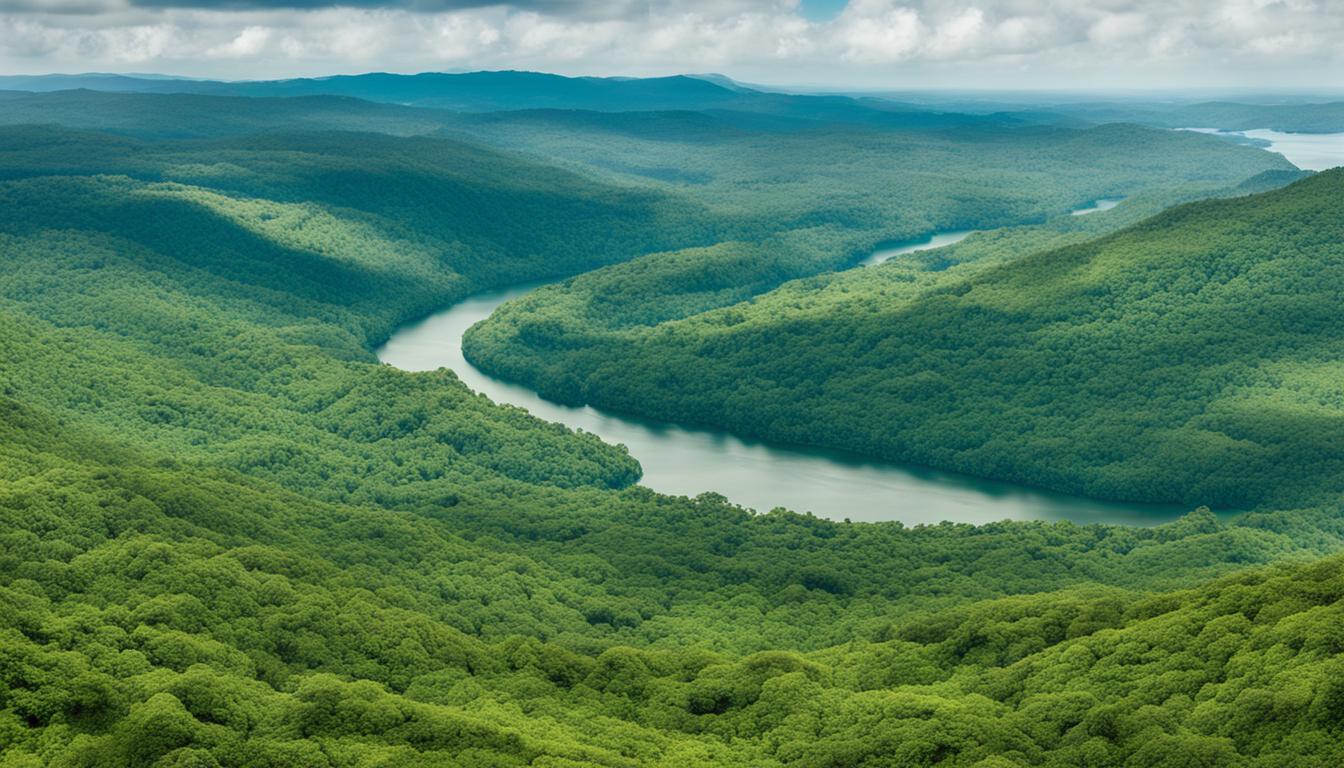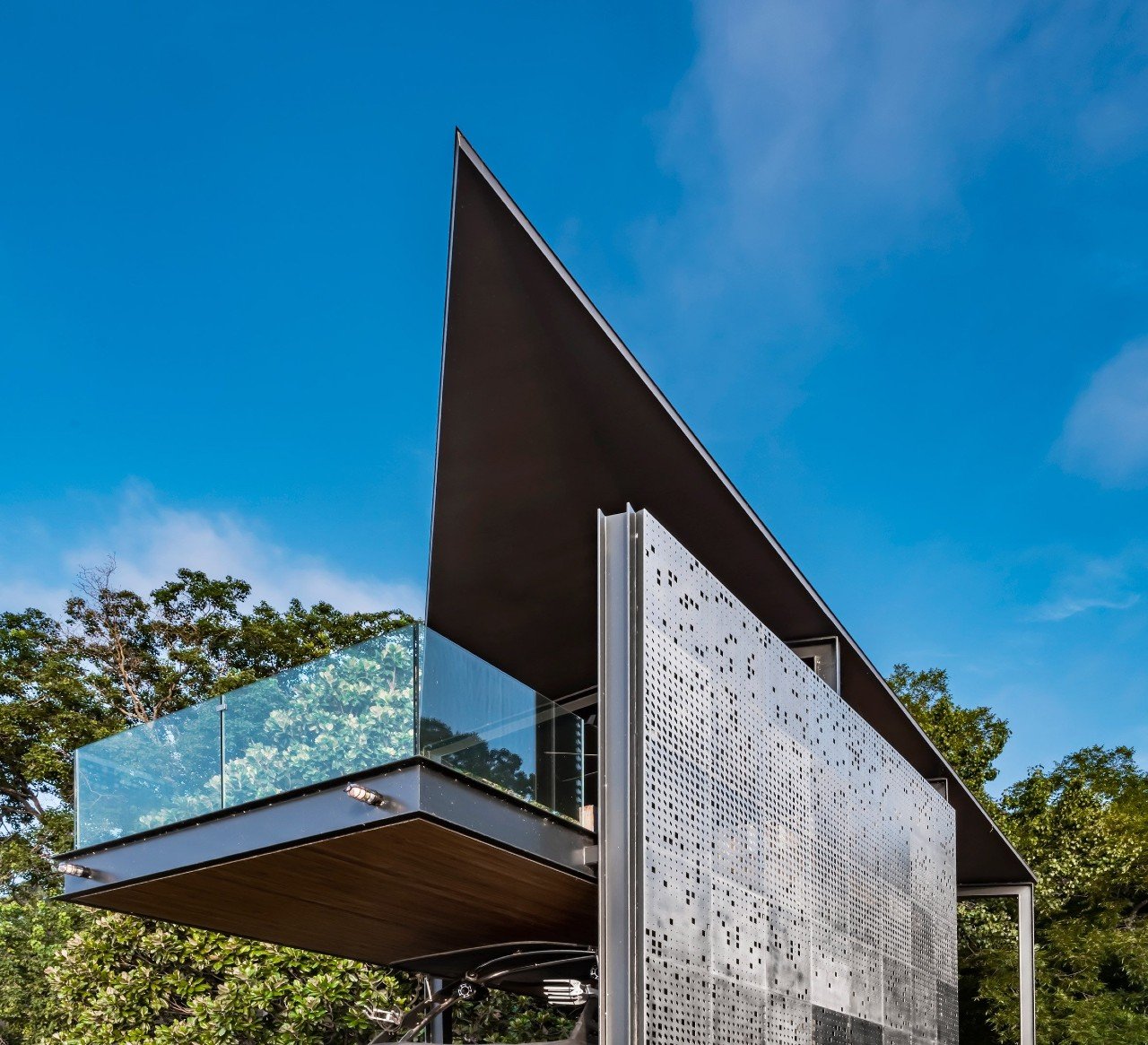Designing Biodiverse Green Spaces in Modern Urban Planning
Did you know a single urban park can be home to over 2,000 plant and animal species? As cities get bigger and more crowded, saving and making biodiverse green spots is vital. This article looks into why creating these spaces is key, the problems of making them in packed places, and ways to boost urban nature.
Key Takeaways
- The design of biodiverse green spaces is crucial for enhancing urban biodiversity, mitigating environmental challenges, and promoting the well-being of city dwellers.
- Urban densification poses significant challenges, such as the urban heat island effect and the loss of green spaces, which threaten the ecological balance of cities.
- Green infrastructure and nature-based solutions, including sustainable landscaping practices and ecological urban design principles, can contribute to the creation of biodiverse and resilient urban landscapes.
- Community engagement and participatory planning processes are essential for the successful implementation of biodiverse green spaces in urban areas.
- Successful case studies and best practices can provide valuable insights and practical strategies for designing biodiverse green spaces in other urban contexts.
The Importance of Urban Green Spaces
Urban green spaces include parks, gardens, and green corridors. They are important for cities in many ways. They keep city temperatures down and make the air cleaner. They also give people places to relax and help city wildlife thrive.
Environmental Benefits
Green spaces in cities help the environment in several key ways. They cool the air, reduce water runoff, and trap carbon. These actions fight climate change. They also clean the air by catching pollutants and homes to many different plants and animals.
Socio-economic and Health Advantages
City green spaces bring more than just environmental perks. They are hubs for fun, exercise, and relaxations. This boosts people’s health and happiness. It also makes cities nicer places to live and can even raise property values.
Enhancing Urban Biodiversity
Green areas in cities are vital for helping city wildlife thrive. They act as homes and food for many animals and plants. By doing this, they keep the city’s natural balance in check. These spaces are crucial for not only people’s well-being but also for urban wildlife.

Challenges of Urban Densification
Cities everywhere are trying to cater to more people while using land better. However, this push for urban densification faces big hurdles in keeping and making green spaces. The urban heat island effect and loss of green space are two major challenges.
Urban Heat Island Effect
The urban heat island effect means cities are hotter than the countryside around them. This happens because there are fewer green areas and more surfaces like concrete. These surfaces soak up heat and keep it, making city life hotter and less comfortable. Also, this makes cooling buildings harder and can hurt people’s health in heatwaves.
Loss of Green Space
Infill development and changing land into housing or business sites means fewer parks and green areas. This is bad for city nature and the animals and plants that live there. With less green space, the natural balance and homes of many species are at risk, which is harmful to the city’s overall biodiversity.

Dealing with these challenges is key to make cities more diverse and stronger. It involves using more green in city planning, focusing on solutions from nature, and getting the local community involved. These steps help keep our cities growing but also green and full of life.
Green Infrastructure and Nature-Based Solutions
City life often comes with more buildings and less green. As a response, urban planners are putting more focus on two key ideas. These are Green Infrastructure and Nature-based Solutions. Green infrastructure means connecting parks, gardens, and forests. Nature-based solutions copy nature to help the environment, society, and economy.
Sustainable Landscaping Practices
Using the right plants and watering wisely can make cities greener and tougher. This approach, called sustainable landscaping, helps local plants and animals. Also, it cuts down on water and protects the city’s natural balance.
Ecological Urban Design Principles
For cities to be both modern and green, they follow ecological urban design. This design keeps green areas safe and adds new ones in smart places. It helps make a city where nature and buildings work well together.

| Green Infrastructure | Nature-Based Solutions |
|---|---|
| Strategic network of interconnected green spaces | Harnessing the functions of natural ecosystems |
| Provides multiple ecosystem services | Offers environmental, social, and economic benefits |
| Includes parks, gardens, urban forests, and green corridors | Mimics natural processes and systems |
| Enhances urban biodiversity and resilience | Promotes sustainable and nature-friendly urban development |
Designing Biodiverse Green Spaces in Modern Urban Planning
Integrating biodiverse green spaces in urban planning is key for sustainable cities. It involves taking a big-picture view. We have to think about green spaces serving many needs, from supporting urban biodiversity to improving life for city residents.
Biophilic urbanism teaches us to mix nature into our cities wisely. When we place and connect green areas with care, we make environments that teem with wildlife and are strong against challenges.

Using green infrastructure and nature-based solutions brings huge rewards. It improves the environment, helps the economy, and boosts urban wildlife. These efforts, shaped by ecological urban design, let us blend the city with nature beautifully.
| Key Strategies for Designing Biodiverse Green Spaces | Benefits |
|---|---|
| Incorporation of biophilic design principles | Enhances connection to nature, improves mental and physical well-being |
| Strategic placement and connectivity of green spaces | Supports urban biodiversity, facilitates species movement and dispersal |
| Adoption of sustainable landscaping practices | Reduces environmental impact, promotes water conservation and native species |
| Community engagement and participatory planning | Ensures green spaces align with local needs and fosters stewardship |
This comprehensive strategy for designing biodiverse green spaces works wonders in urban planning. It helps us build cities that are not just good for people but also for the planet.
Urban Rewilding and Ecosystem Restoration
Cities are growing bigger. So, the need for urban rewilding and ecosystem restoration is clear. These methods help bring back nature to cities. They make urban areas better for plants and animals. This is essential to fight challenges like overcrowding in cities.
Habitat Creation and Connectivity
One big goal is to make places for animals and plants to live. This means we create gardens that attract pollinators. We also grow urban forests and make green paths that connect different green areas. By doing this, we offer homes and travel paths for many plants and animals. It helps nature thrive in cities.
Native Plant Species Selection
Choosing the right plants is also very important. We pick plants that belong here and help local animals. These plants bring back the natural order. It also adds to the variety of life in urban spots. So, using native plants makes cities healthier and more able to face changes.

Green Corridors and Ecological Networks
The building of green corridors and ecological networks is crucial. It helps spread biodiveristy in cities. Green corridors, like linear parks and greenways, link green spots. This connection aids plants and animals to move, thus boosting the variety of life in the city.
Linking Urban Green Spaces
Green corridors are key to connecting urban green areas. They create a habitat network for various plant and animal species. Thanks to these pathways, nature can move and grow throughout the city.
Facilitating Biodiversity Movement
Designing green corridors right helps facilitate biodiversity movement in cities. They offer a safe way for wildlife to find food and shelter. This helps keep different species strong and the city’s nature diverse.

Community Engagement and Participatory Planning
Creating biodiverse green areas in cities that work well needs the community’s involvement. This means talking to people and letting them say what they want. By including locals, groups, and others from the area, the green spaces can meet everyone’s wishes.
Public Consultation and Involvement
Taking the public’s views into the planning helps a lot. It makes sure the spaces are what people actually need and want. Also, it makes everyone feel they’re a real part of it which is great for the community spirit.
Also, it helps in spotting and fixing any big problems early. This way, the project can be more successful and everyone can enjoy the benefits.
Education and Awareness Programs
Teaching people about the importance of green spaces is key. This can include community events and school projects. The goal is to make everyone feel like they play a role in keeping the green areas nice and healthy.
This way, cities can bring out the best in their citizens. They ensure green spaces meet the real needs of the local people. This leads to better living for everyone.

Case Studies and Best Practices
Looking at successful urban biodiversity projects helps us learn how to create green spaces in cities. We will talk about projects that have improved city life by adding more nature. These stories show us the challenges, solutions, and results of efforts to make cities greener.
Successful Urban Biodiversity Projects
The High Line in New York City is a great example. It used to be an old railway but is now a beautiful park above the streets. Many worked together to change it, and now it’s full of plants and animals. It has encouraged similar projects worldwide, proving the power of making nature part of the city.
In Christchurch, New Zealand, we find the Subantarctic Gardens. Here, a group of experts has brought new life to an urban green area. They planted native plants, built homes for wildlife, and linked areas for animals to move. This effort shows the importance of choosing the right plants and connections for city nature.
Lessons Learned and Practical Strategies
These projects teach us important things for the future. They show us the value of working with the community from the start. They also highlight the need to use local plants to attract a variety of animals.
- Making green areas that connect helps species move freely around the city.
- Adding nature into city design through things like green roofs helps in many ways.
- Keeping an eye on these areas and making changes as needed is key to their success.
Through these stories and lessons, we can make our cities better for both people and nature. By following these strategies, we can create green, resilient, and pleasant cities. These steps will help our city ecosystems grow and thrive.
Conclusion
Creating biodiverse green spaces in cities is vital for a sustainable future. This design approach benefits the environment, society, and the economy. It also boosts urban biodiversity.
Using green infrastructure and nature-based solutions makes our cities better. It helps create healthier habitats and encourages community involvement. As cities grow, these green spaces help ensure a happy, healthy future for everyone.
Getting to a greener, more biodiverse city takes teamwork. It involves leaders, designers, nature specialists, and the public coming together. This way, we can build cities that are full of life and great to live in.
FAQ
What are the key benefits of urban green spaces?
Urban green spaces offer many benefits. They cool the air, clean it, and lower the risk of flooding. They also take in harmful carbon. For people living in cities, these areas are a breath of fresh air. They provide places for fun, boost health, and make the city better to live in. Not to mention, they help keep the city’s plants and animals alive.
What challenges do urban densification pose for the preservation and creation of biodiverse green spaces?
City growth and the need for better land use are making things tricky. Green areas are disappearing, and more hard surfaces are heating the city up. Adding more buildings and changing land use are hurting the city’s natural balance. We’re losing the homes and food of many plants and animals.
How can green infrastructure and nature-based solutions address the challenges of urban densification?
Green areas and nature solutions are key in fighting city problems. They connect parks, gardens, and forests to do good for the earth. By using native plants and smart water use, cities can be greener and friendlier to life. Good planning can make cities not just bigger but also better for nature.
What is the role of urban rewilding and ecosystem restoration in enhancing urban biodiversity?
Reviving nature in our cities can make a big difference. It gives new homes and paths to many plants and animals. By using local plants, we can help nature heal itself. This approach helps bring back the plants and animals that really belong here.
How do green corridors and ecological networks contribute to the enhancement of urban biodiversity?
Connectivity is key in keeping cities green. Green pathways connect parks and allow life to move around. These pathways let nature thrive in the city. This keeps the city’s plants and animals healthy and varied.
What is the role of community engagement and participatory planning in the design of biodiverse green spaces?
A lot of people working together make green spaces possible. When locals and groups help plan, they make green spaces that everyone loves. Learning about city nature also makes us want to protect it. This helps keeps cities green now and in the future.







